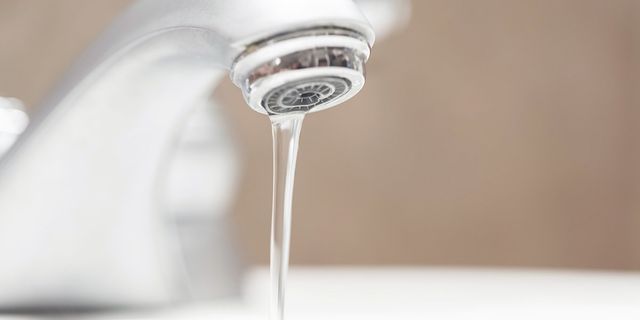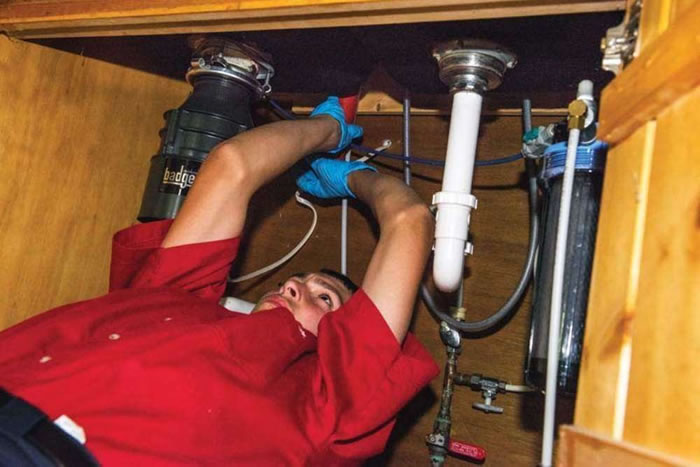Speedy Solutions for Addressing Low Water Pressure in Your Home
Speedy Solutions for Addressing Low Water Pressure in Your Home
Blog Article
They are making a few good points regarding 4 Ways to Troubleshoot Low Water Pressure in general in this content directly below.

Low tide pressure in your house can be an aggravating trouble, influencing everything from showering to washing recipes. If you're experiencing weak water circulation, there are a number of possible causes and remedies to discover. In this overview, we'll review usual factors for low tide pressure and functional steps to address the issue efficiently.
Intro to Low Tide Stress
Low tide pressure happens when the circulation of water from your taps, showers, and other components is weak than common. This can make day-to-day tasks more difficult and less effective. Recognizing the reasons for low water pressure is critical to discovering the appropriate solution.
Common Root Causes Of Low Tide Stress
Pipeline Obstructions
With time, pipelines can become obstructed with natural resource, debris, or particles, restricting the circulation of water. This is a common concern in older homes with galvanized steel pipelines.
Rust
Rust within pipes can lead to leakages and lowered water pressure. Rust accumulation can constrict water circulation, particularly in maturing plumbing systems.
Faulty Pressure Regulatory Authorities
Pressure regulatory authorities are in charge of preserving constant water pressure in your home. If they malfunction, it can cause low tide pressure or uneven circulation throughout your house.
Municipal Supply Of Water Issues
Sometimes, the problem exists outside your home. Community supply of water concerns, such as main line leakages or upkeep work, can temporarily reduce water pressure in your location.
Just How to Diagnose Low Tide Pressure
Checking Taps and Fixtures
Beginning by testing the water pressure at different taps and fixtures throughout your home. If the problem is separated to particular locations, it might indicate local troubles.
Checking Pipes
Examine noticeable pipes for indicators of leakages, rust, or clogs. Focus on any kind of unusual noises, such as knocking or rattling pipelines, which can indicate problems within the plumbing system.
Consulting with a Plumber
If you're incapable to identify the root cause of low water pressure, think about working with a specialist plumber to perform a comprehensive assessment. They can determine underlying issues and recommend proper solutions.
Do It Yourself Solutions to Deal With Low Water Stress
Cleaning Aerators and Showerheads
Mineral deposits can accumulate in aerators and showerheads, lowering water circulation. Remove and clean these elements regularly to improve water stress.
Flushing Hot Water Heater
Sediment build-up in the water heater can limit flow and lower efficiency. Flushing the storage tank occasionally helps eliminate debris and maintain optimal efficiency.
Examining Pressure Regulator
Make sure that the stress regulatory authority is functioning properly. Readjusting or changing the regulator can help restore correct water stress throughout your home.
Cleaning Clogs in Water Lines
For minor obstructions, try utilizing a plumbing snake or chemical drainpipe cleaner to clear obstructions in pipelines. Be cautious when utilizing chemicals and follow safety guidelines.
When to Call a Professional Plumber
If do it yourself initiatives fail to resolve the problem or if you think significant plumbing issues, it's best to look for support from a licensed plumber. They have the competence and devices to attend to complex issues securely and efficiently.
Preventive Measures to Preserve Water Pressure
Routine Upkeep
Set up routine upkeep for your plumbing system to stop problems such as corrosion, leakages, and blockages. Addressing minor troubles early can aid stay clear of even more considerable repair work later.
Installing a Pressure Booster
Take into consideration setting up a pressure booster pump to improve water pressure in areas with constantly low flow. This can be particularly helpful for multi-story homes or residential properties with high-demand fixtures.
Tracking Water Use
Be mindful of water usage habits and stay clear of ill-using the plumbing system. Straightforward modifications, such as astonishing showers and washing lots, can aid preserve appropriate water pressure.
Verdict
Dealing with low tide pressure can be aggravating, yet recognizing the underlying reasons and implementing appropriate solutions can recover ideal circulation throughout your home. Whether it's cleansing aerators, checking pipelines, or seeking advice from a plumber, taking aggressive steps can ensure a stable supply of water for your day-to-day needs.
FOUR WAYS TO FIX LOW WATER PRESSURE NOW
Turning on a shower or faucet only to find the water comes out in a sad, slow drizzle is never a good feeling. How exactly are you supposed to wash a pan or take a quick shower when it takes 10 minutes just to rinse off a little soap? The good news is that when your water pressure is bad, there's always a cause: typically one that can be easily fixed. Here are some of the most common causes of low pressure and what you can do to fix the issue:
DEBRIS AND MINERAL DEPOSIT BUILDUPS
If you notice low water pressure from just one or two of the fixtures in your house, the problem likely has to do with debris buildup. Water is full of minerals and other debris, all of which can accumulate in your pipes and on your fixtures. This can cause a blockage that affects how much water flows through. To fix this, try filling a small plastic bag with white vinegar, and use a rubber band to hang it around your showerhead or faucet. Let the head of the fixture soak for a few hours, and the vinegar should loosen the deposits.
WATER LEAKS
Leaks are another common cause of low water pressure. If water is flowing out of your plumbing through a hole or crack before it can reach your fixture, the pressure coming out of the faucet or showerhead will be lower. A plumbing professional is your best bet for finding and repairing a leak in your water supply pipes.
Leaks are another common cause of low water pressure. If water is flowing out of your plumbing through a hole or crack before it can reach your fixture, the pressure coming out of the faucet or showerhead will be lower. A plumbing professional is your best bet for finding and repairing a leak in your water supply pipes.
FOUR WAYS TO FIX LOW WATER PRESSURE NOW
Turning on a shower or faucet only to find the water comes out in a sad, slow drizzle is never a good feeling. How exactly are you supposed to wash a pan or take a quick shower when it takes 10 minutes just to rinse off a little soap? The good news is that when your water pressure is bad, there's always a cause: typically one that can be easily fixed. Here are some of the most common causes of low pressure and what you can do to fix the issue:
DEBRIS AND MINERAL DEPOSIT BUILDUPS
If you notice low water pressure from just one or two of the fixtures in your house, the problem likely has to do with debris buildup. Water is full of minerals and other debris, all of which can accumulate in your pipes and on your fixtures. This can cause a blockage that affects how much water flows through. To fix this, try filling a small plastic bag with white vinegar, and use a rubber band to hang it around your showerhead or faucet. Let the head of the fixture soak for a few hours, and the vinegar should loosen the deposits.
WATER LEAKS
Leaks are another common cause of low water pressure. If water is flowing out of your plumbing through a hole or crack before it can reach your fixture, the pressure coming out of the faucet or showerhead will be lower. A plumbing professional is your best bet for finding and repairing a leak in your water supply pipes.
Leaks are another common cause of low water pressure. If water is flowing out of your plumbing through a hole or crack before it can reach your fixture, the pressure coming out of the faucet or showerhead will be lower. A plumbing professional is your best bet for finding and repairing a leak in your water supply pipes.
A VALVE ISSUE
If you have low water pressure throughout your home, check your main shut-off valve to make sure it's completely open. You may also want to see if there's a pressure-reducing valve installed. If there is, have a plumber help you adjust the settings to get the pressure you're looking for.
OTHERS USING WATER
Believe it or not, your low water pressure could be caused by your neighbors. If you notice low pressure at certain times of day, it may be because you and the people living next to you have similar schedules - when everyone is showering at the same time, the pressure will be lower in every home. Low pressure throughout the neighborhood may also be caused by an issue with your municipal water supply. If that's the case, call the supplier to see if they're working on the issue.
https://www.rotorooter.com/blog/water-leaking/low-water-pressure-fixes/

As a person who reads on Dealing with Low Water Pressure in Your Home, I figured sharing that blog post was smart. Do you know about someone else who is serious about the topic? Please feel free to share it. We love your readership.
Call Today Report this page